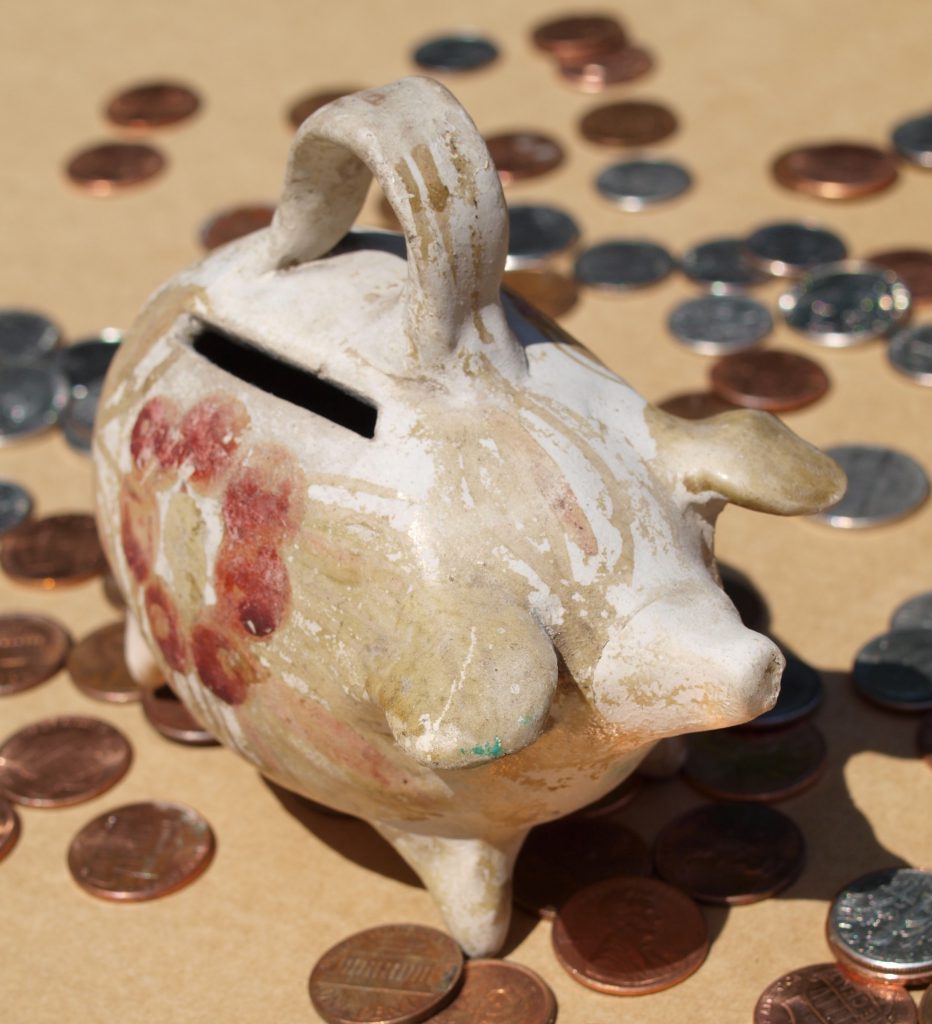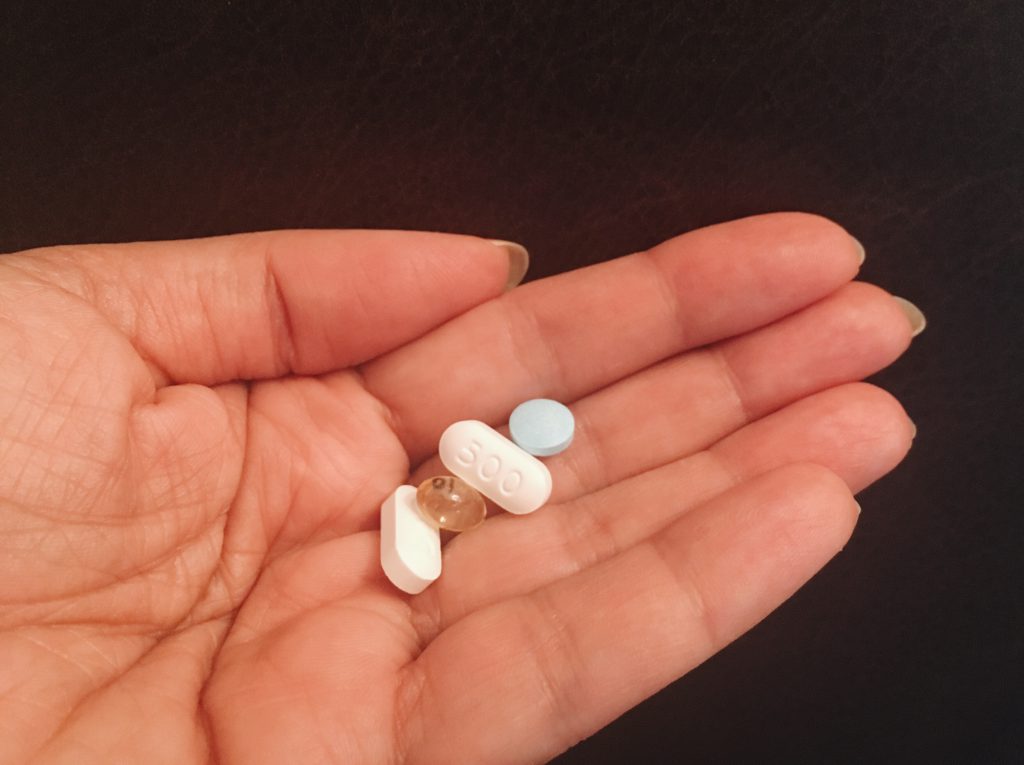(Featured image of medications courtesy Unsplash.com)
It happens every time. Dawn goes to the pharmacy to pick up prescriptions, and the prices are different. Higher. She could just accept the changes, pay with a gulp, and hurry out of the store. But instead, she sets her purse down on the counter and settles in for some negotiation.
You could call her a prescription-buying veteran. Because she must take pituitary hormone replacement medications every day, Dawn’s been filling prescriptions every three months for the past 9 years. Combine this with the fact that we now self-insure long term prescriptions because we’re members of a healthshare, and she’s developed some useful techniques for saving money. On our most recent visit, she got the bill to drop from $297 to $161!

Why Does This Happen?
Drug prices fluctuate depending on the market. In addition, insurance companies are constantly renegotiating their “fixed” prices with the companies. If you fill at a hospital, they constantly change their formularies. It’s frustrating, but it’s reality. Dawn needs these medications. Rather than resist, we’ve chosen to figure out ways to work within the system.
As we always say, control what you can control. Ask good questions when you first receive the prescription (not that medical practitioners always know about costs, but it doesn’t hurt to ask). And unless you’re really in a hurry or only have one little refill to pick up, we suggest you don’t use the drive through at the pharmacy so that you can discuss and negotiate as needed without feeling rushed.
Regardless of whether you have insurance or pay for prescriptions out of pocket, here are some tips for what to do when you’re faced with sticker shock at the pharmacy counter, including some things to do proactively before you even get there.
Check your prescriptions before leaving the doctor’s office
Before even trying to fill your prescription, make sure your doctor writes it for a brand name or generic equivalent. This gives more leeway for the pharmacist to fill the prescription with the most cost-conscious option. However, if it’s a new drug, there may not be a generic equivalent. Make sure you understand your doctor’s choice of medication and if there might be an older, less expensive but equally effective alternative available before leaving with that prescription.
Ask the pharmacy to check prices on brand names AND generics
Depending on the insurance coverage, it’s possible that a brand name will actually be cheaper than the generic equivalent. Usually, it’s the other way around, but if you’re faced with a huge bill, try asking them to run the brand names through your insurance to see if it helps.

Check coupon apps and cards
If you’re like us and you use a healthshare, or if you need a drug that your insurance doesn’t cover, drug coupon programs can really come in handy. Our healthshare has their own discount program, but we also like the GoodRx app. It’s very easy to use, and you can save coupons in the app for future use. An article by consumer advocate Clark Howard just turned us on to RxSaver, which works similarly to GoodRx.
These are literally no strings attached apps. You don’t even have to create a login. They can be used even if you have insurance, but you can’t get a compound discount by combining an insurance price with a coupon. If the coupon’s cheaper, go with that. Another caveat: be careful to put the correct dosing and number of pills dispensed in the search for an apples to apples comparison.
Bear in mind that the coupon discounts fluctuate with drug prices, so they must be examined each time you refill. We usually have the pharmacy tech run each one we have and choose the cheapest one. Yes, it takes time, but yes it’s worth it.
If you have nothing, you can ask your pharmacy to run whatever coupons they already have in their system. Sometimes you can get a decent discount by just asking!
Search the web for manufacturer coupons
Check the web for drug manufacturer coupons. Dawn once did this, upon the recommendation of a pharmacist, for an Epi-pen prescription and it saved hundreds of dollars. But timing can be an issue; if you need the drug, you need the drug and can’t wait around for a coupon to be available. We experienced this recently when Aspen had an acute outer ear infection with eardrum perforation – the treatment for which is an expensive ear drop, a combination drug with no generic equivalent. Late in the night we were searching for online coupons, but there were none to be found. We bought it anyway, of course, despite the $250 pricetag. Because #valueism.

Process receipts for FSA/HSA submissions
Keep your receipt AND your drug information sheet for FSA or HSA purposes. Process in whatever manner you normally do, just don’t forget and wad up that receipt before photographing/scanning or storing!
We hope this helps you navigate the confusing land of prescription drugs in the US. Have you ever had a ridiculously high drug bill? Tell us how you dealt with it in the comments below!

 Slow Family Travel – Panama’s Pacific Coast (pt 2)
Slow Family Travel – Panama’s Pacific Coast (pt 2)